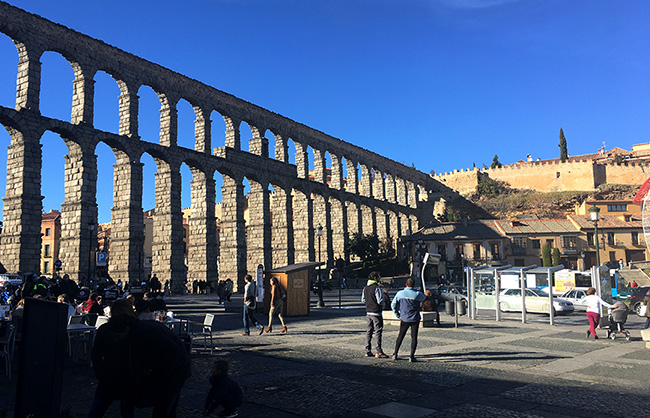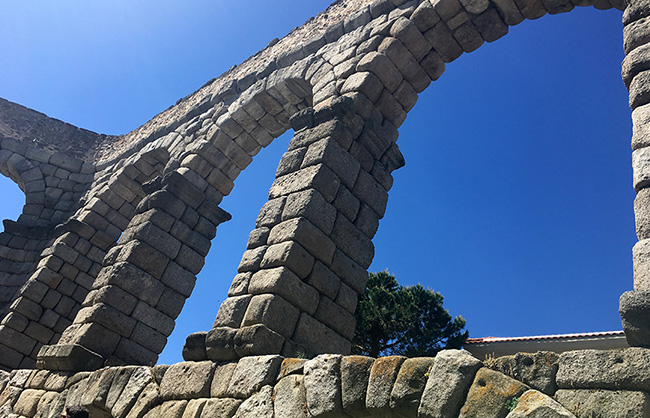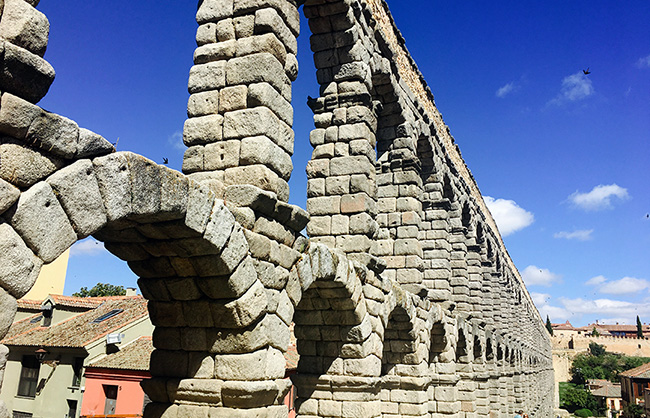Cultural Heritage of Segovia (Spain)
Segovia is a city in the centre of Spain, part of the autonomous community of Castile and León. The city was already inhabited in the Bronze Age. During Celtic domination it was conquered by Romans who made of it an important centre of the Empire.With the conquest by the Arabs the city lost part of its relevance and was regained with the Reconquista in 1088.
The old town is excellently preserved and has relevant monuments that follow the different historic periods of the region and show the coexistence of several religions and cultures: the Alcázar castle, several Romanesque churches, noble palaces from 15th and 16th centuries, the Gothic cathedral.
The most important and well preserved monument is the Roman Aqueduct that stands-up in the centre of the city. Probably built during the last years of the 1st century and the early years of the 2nd century A. C., during the reign of the emperor Trajano, the Aqueduct has two tiers of arches and colossal pillars, covering 813 meters in length. This magnificent Roman Aqueduct, well-known for the civil engineering feats and its monumentality, has been included in UNESCO’s cultural heritage list since 1985. It is also brought back to life with integration in cultural events such as the traditional Aqueduct Gala, with the Ballet de Cámara de Madrid, that involves also other zones of the city. The Dance is an important aspect of Segovian cultural heritage: group of citizens practice typical dances in order to forward tradition and passion to youngsters, creating a strong sense of belonging and reinforcing the community. Folkloric dances take place during fests, religious events and are especially practiced by ‘La Esteva’ (that will be directly involved in the project activities), a cultural association that revives the ancient dance styles and costumes, spreading the tradition with its participation at several international festivals.
The Alcázar, also included in UNESCO’s list with the old centre of Segovia, is a distinctive castle-palace, built on Roman fort foundations, emerged in the Muslim era with the Almoravid dynasty.The Alcázar had been the residence of the Catholics Kings, Ferdinando and Isabella during the time of Reconquista of south Spain from Muslims. Queen Isabel was crowned there.
The city is known for the presence of another important woman, the philosopher María Zambrano (1904-1991), who spent her adolescence there. With her works Zambrano revitalized Spanish philosophical tradition with her works. She used philosophy as an instrument to express freedom of thought and the potentiality of life. To her a University campus and a street in the center of the city are dedicated.








